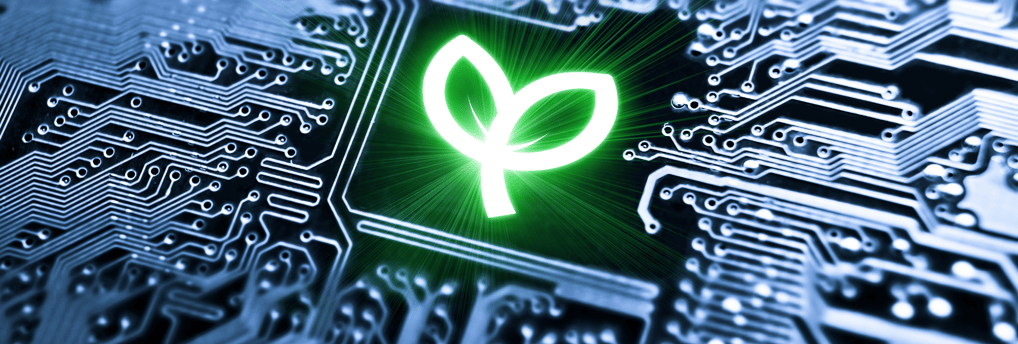Green Computing: Why Your Smart Home Needs Energy-Efficient Hardware
Green computing makes tech eco-friendly by using less energy, reducing waste, and promoting sustainable practices throughout a device's life cycle, helping to minimize environmental impact and reduce operational costs.


Imagine having a smart home that not only makes life easier but also saves energy and reduces your carbon footprint. With the rise of green computing, homeowners can now enjoy the perks of modern technology while being eco-friendly. But what exactly is green computing, and why should you care?
Green computing is all about designing, using, and disposing of electronic devices in an environmentally friendly way. It means choosing energy-efficient hardware, optimizing software performance, and reducing electronic waste. The goal? To minimise the impact of technology on our planet while keeping our homes smart and functional.
Who doesn’t love saving money? Energy-efficient hardware consumes less power, meaning lower electricity bills. A smart home should be smart about energy use, and green computing helps make that happen.
Green Computing: Why Your Smart Home Needs Energy-Efficient Hardware
What Is Green Computing?
Subscribe to our newsletter
Lower Energy Bills
Environmental Impact
Every time you turn on a device, it contributes to carbon emissions. By choosing eco-friendly gadgets, you help reduce energy waste and decrease your household’s carbon footprint.
Longevity and Performance
Energy-efficient devices tend to last longer. They generate less heat, reducing wear and tear, which means fewer replacements and less electronic waste.
Must-Have Energy-Efficient Computing Products for Your Smart Home
Your smart home is already loaded with tech gadgets—smart thermostats, voice assistants, security cameras, and more. But did you know these devices can consume a lot of energy even when idle? Here’s why switching to energy-efficient hardware is a game-changer.
Why Should Your Smart Home Go Green?
Energy-Efficient Laptops
Modern energy-efficient laptops, such as those powered by Apple’s M-series chips or Intel’s Evo-certified processors, consume significantly less energy compared to older models. These devices use advanced power management techniques to optimise performance while reducing power draw. Many also feature low-power display technology and efficient cooling systems, which minimise energy waste and extend battery life—meaning fewer charges and a lower electricity bill.
Traditional desktops are notorious for consuming large amounts of power. Switching to mini PCs like the Intel NUC, Mac Mini, or Raspberry Pi dramatically reduces energy usage. These devices use lower-wattage processors, solid-state drives (SSDs), and fanless cooling designs, cutting down on both power consumption and heat generation. Since they require fewer materials to manufacture, they also contribute to reducing e-waste.
Mini PCs and Compact Desktops
All-in-one (AIO) computers, such as the Apple iMac or HP Envy series, consolidate the monitor and CPU into a single, energy-efficient unit. This integration reduces overall power consumption, eliminates the need for multiple power-hungry components, and minimizes electronic waste. Many AIOs also use LED-backlit displays, which are significantly more energy-efficient than traditional LCDs.
All-in-One Computers
Energy-Saving Monitors
Monitors are often left on for extended periods, draining power unnecessarily. Energy-efficient monitors, such as those with Energy Star certification, utilise LED technology, automatic brightness adjustment, and power-saving sleep modes to cut down on electricity consumption. Some models even incorporate ambient light sensors that adapt to room lighting, reducing strain on the eyes while optimizing energy use.
Smart Power Strips for Computers
Even when computers and peripherals are turned off, they continue to draw power in standby mode. Smart power strips detect when a device is not in use and automatically cut off power to prevent "phantom" energy drain. This simple yet effective solution significantly reduces wasted electricity, lowering both your energy bill and your environmental footprint.
Tips to Manage Energy Consumption
Optimise Device Settings
Many devices have power-saving modes. Make sure to activate them to minimise unnecessary energy use.
Automate and Schedule Usage
Use automation features to turn off devices when they’re not needed. Set schedules for lighting, heating, and appliances to avoid waste.
Unplug When Not in Use
Even smart devices in standby mode consume energy. If you’re not using something regularly, unplug it or use a smart power strip to cut off power automatically.
Upgrade to Energy Star Devices
When shopping for new gadgets, look for the Energy Star label. These products meet strict energy efficiency guidelines and help lower electricity consumption.
By integrating energy-efficient hardware into your smart home, you save money, reduce environmental impact, and extend the lifespan of your devices. .
Let's Connect
Sign up to the newsletter
© 2025. All rights reserved.


